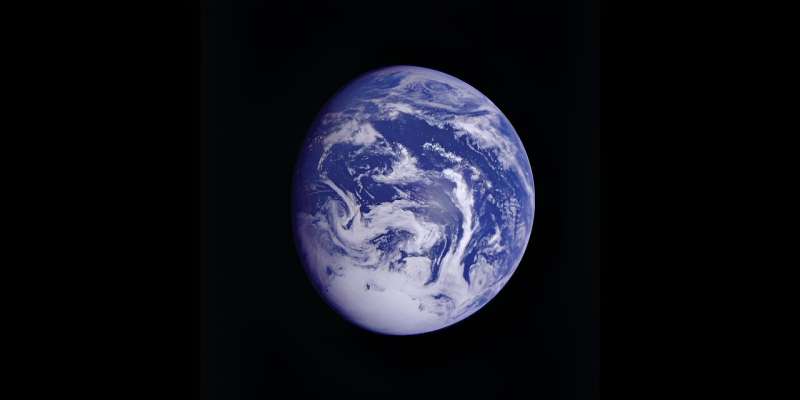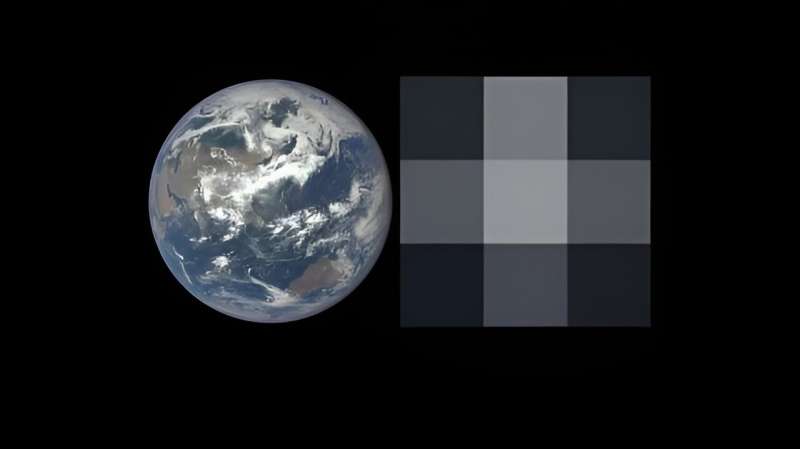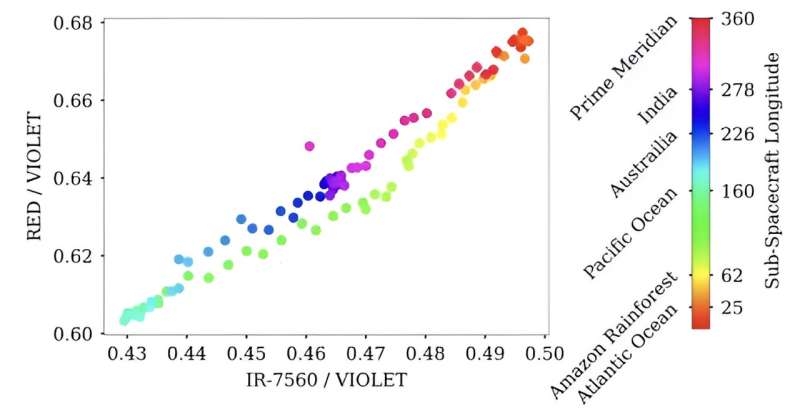This article has been reviewed according to Science X's editorial process and policies. Editors have highlighted the following attributes while ensuring the content's credibility:
fact-checked
trusted source
proofread
Did the Galileo mission find life on Earth?

In the fall of 1989, the Galileo spacecraft was launched into space, bound for Jupiter and its family of moons. Given the great distance to the king of planets, Galileo had to take a roundabout tour through the inner solar system, making a flyby of Venus in 1990 and Earth in 1990 and 1992 just to gain enough speed to reach Jupiter. During the flybys of Earth Galileo took several images of our planet, which astronomers have used to discover life on Earth.
The idea of "discovering" life on Earth in the 21st century might seem a bit ridiculous, but the study is quite useful to astronomers seeking life on other worlds. Since we know there is life on Earth as well as the geography and diversity of our world, images from Galileo can be used as a test bed to compare with images of exoplanets. We are still in the early stages of making direct images of some exoplanets, and astronomers are still learning what those images might tell us.

So in a new work posted to the arXiv preprint server, the team focused on what are known as disk-integrated images. This is where light from a planet is taken as a whole. Instead of a detailed image of Earth such as the one above, the team looked at integrated images from the Limited Solid State Imager (SSI). The disk-integrated images it gathers are similar to the images we can capture of exoplanets. They then looked at the overall brightness and spectra of these images to see what they could tell us about Earth.
One of the things the authors found is that much of the spectral data in the integrated images is washed out, making it difficult to identify particular biosignatures. That was somewhat expected since the Galileo cameras were optimized for Jupiter, which is much more distant from the sun and therefore much dimmer. However, the team was able to detect an oxygen absorption line, verifying that our planet has an oxygen-rich atmosphere. By itself the presence of oxygen wouldn't conclusively prove that life exists on Earth, but it is a good start.

More interestingly, the team was able to look at the changes in albedo, or reflective brightness as Earth rotates. From this, they could get a very rough idea of continents and oceans on Earth. From this they could prove that Earth has a mixture of both lands and oceans, making it well-suited for habitability.
The biggest benefit of this study and others like it is that it provides a baseline for potentially habitable exoplanets. Seen from a distance and with limited resolution, this is how a life-bearing planet appears. As astronomers find exoplanets that appear similar, they will know they are on the right track to discovering life on other worlds.
More information: Ryder H. Strauss et al, Exoplanet Analog Observations of Earth from Galileo Disk-integrated Photometry, arXiv (2024). DOI: 10.48550/arxiv.2402.00984
Provided by Universe Today




















